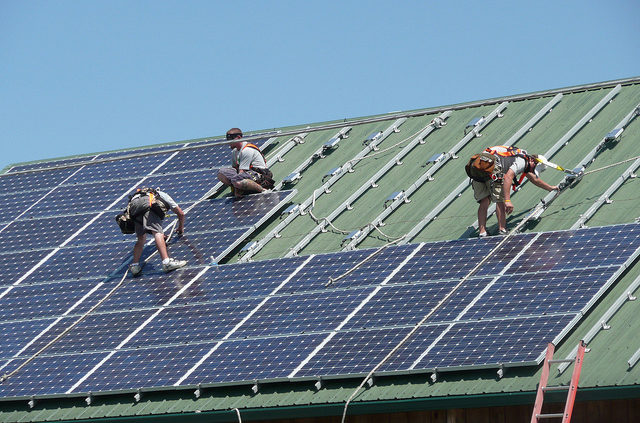
Solar energy. You’ve heard about it on the news. You’ve read about it in magazines. And you’ve got a lot of questions. Cost being on the top of your list. How much does it cost to install solar panels? How much do you have to put down? How long to see your return on investment? Read on to see how you’ll be able to save on your energy costs and help the environment while you’re at it.
Estimating the Cost
Statistics indicate that the national average for electricity consumption in the United States is around 1 kW per hour, with the national price of 1 kW per hour of electricity at $0.10. With 730 hours in a month, that means the average electric bill hovers around $73. Is yours much higher than that? Not surprising. The cost of electricity varies widely state-by-state, and the consumption per state varies just as much as well. Of course, what we power in our homes plays a large role in what your utility bill averages per month. Naturally, if it’s the middle of summer and you’re experiencing heat waves over 100 degrees, your air conditioning is likely running non-stop. On the contrary, if you’re in the dead of winter and the temperature is struggling to get above freezing, your heater is going to run and run. Have a hot tub at your home? That will suck up a lot of energy too, since it runs all day. Think about all the other appliances in your home that run “in the background.” These are all the “little” things that drive up the cost of your utility bill. Couple that with the rise of electric bills by 3% every year, and you’re really wanting to hear more about this solar energy.
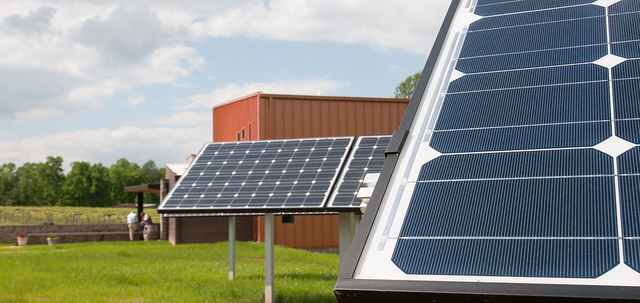
When it comes to residential solar panels, the good news is that their prices have dropped drastically over just the past 5 years. And, the incentives for getting them installed in your home keep getting better as well. Price drops, tax incentives, and federal tax credits have made it possible for some residential solar systems to be priced under $10,000 after installation. This is huge, considering in 2009, when solar panel installation really started gaining steam in the “green economy,” the average price of installed solar systems were $25,000 to $35,000 per home.
In 2016, the average cost to install a solar panel was $3 to $4 per watt. And the average solar photovoltaic system Americans normally install in their homes is about 5 kW (5000 watts). At these rates, most individuals can install a solar system in their homes for about $12,500.
What’s Average and What’s Going to Make the Price Fluctuate?
As with anything, once the newness of something wears off, the price starts to decrease as well. That’s one of the key reasons behind the 12% decrease in solar system prices from 2015 to 2016 alone. In addition, more manufacturers across the globe are producing solar panels, also contributing to the price drop. It’s not so much of the novel thing that it was just five years ago to have solar panels installed at your home anymore. What does this mean for you, the homeowner? Nothing but good! Prices are falling, incentives are great, and you’re able to lower your electric bill. But, if you’ve been quoted at a different price than the averages listed above, there’s good reason. These numbers are just averages and can vary because of a number of factors. Types of solar financial incentives vary state-by-state. And the size of the system you get and need for your home will also vary the price. Adding one more watt to your system (going from a 5 kW system to a 6 kW system) can raise the average price of the system from $12,500 to $15,000. And doubling the size of your system from 5 kW to 10 kW will increase your costs to about $25,000 to have the system installed.
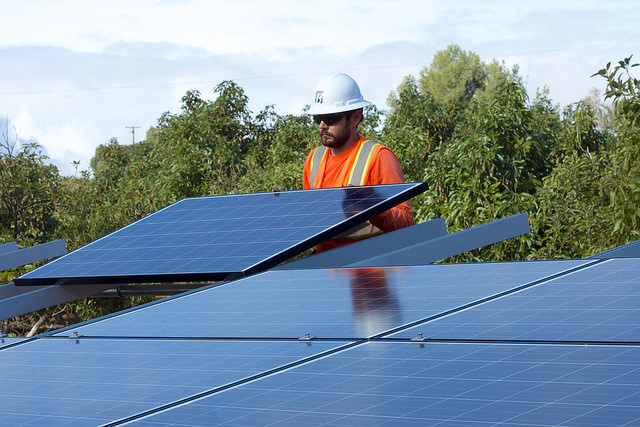
What are you Really Buying When you Get Solar Panels?
In short, cost savings and environmental benefits. If you install a residential solar system in your home, you’ll drastically reduce your carbon footprint, save thousands of dollars on your electric bill over the lifetime of the system (which averages about 25 years), increase your property value, and achieving a significant return on investment (well over 100%). National energy statistics indicate, at the time of this writing, that the average payback period (when savings outweigh costs) for installation of a residential solar system is about five years. In some states, with extraordinarily high energy costs (e.g., Hawaii), the Department of Energy estimates a cost savings of over $60,000 in 20 years. How about the value of your home? It’s been found that installing solar panels will increase your property value. But, how and why? According to the U.S. Department of Energy, property values increase $20 for every $1 of utility savings per year. With a 5 kW unit installed in your home, you could easily increase the value of your home by at least $20,000.
Breakdown of Costs
When we say the average price of installing a solar system in your home costs $15,000, how much is going to the product and how much is going to the installation labor, and how much is going to other things? Let’s take a look.
* Solar panels take up about 30% of the total cost for residential solar systems. And, depending on the type of solar panel you get, the costs may vary widely. But, that doesn’t mean that the best quality solar panels are the most cost effective. A more universal way of looking at cost is to determine the cost per watt. Most solar panels are sold for about $0.70 per watt if bought in bulk. Most homeowners are paying about $1.5 per watt, a 50% decrease from just a couple of years ago!
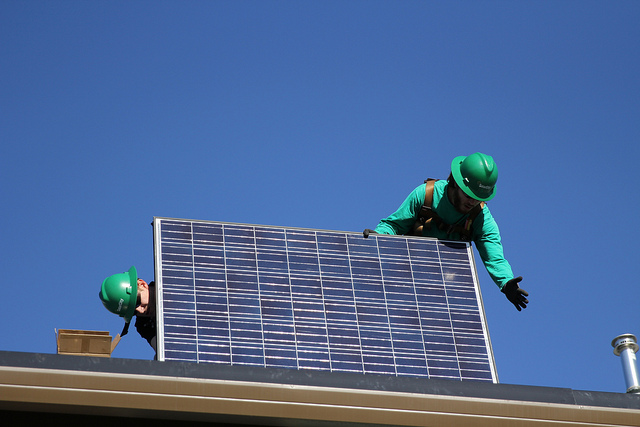
* Balance of System (BoS) is a term that essentially refers to all the extraneous “equipment” that is needed outside of the solar panels themselves. This includes all types of wiring and electrical components needed to keep your system functioning. These components make up about 20% of the total costs of your system installation.
* Inverters. These are necessary components of your residential solar system as they are directly responsible for converting direct current (DC) to alternating current (AC) which is what powers your household appliances and enables you to get energy from the grid. Inverters will cost you about 10% of the total cost of installation.
* Installation. Installation costs, like with anything you install in your home (that you don’t do yourself), will cost you some money. As far as residential solar system installations go, this will contribute to about 15% of your overall costs. And these prices include everything from the labor to the permits you’ll need to obtain from roofers (to make sure your roof can bear the weight of the solar panels you are planning on installing) and your utility company to allow you to connect your solar system into the grid.
* Lastly, once everything is installed, you’ll need to take into account the operational costs to keep your system well-oiled and maintained. These types of maintenance costs will make up about 20% of your overall costs.
Solar Financial Incentives
Based on the federal solar tax credit, you’ll receive a 30% rebate off the top of your residential solar system installation. This alone is a huge incentive. On top of this though, your state might offer additional rebates and incentives for installing a home solar system. Some homeowners might even be able to shave off 50% off the top of their costs because of the rebates and incentives they are eligible for. Just as utility costs vary state by state, these incentives can also vary state by state.

One great resource to use to determine what your state offers is the State Incentives for Renewables and Efficiency (DSIRE).
Worried that you don’t have the money to spend? Some solar installers are offering terrific financing options, with $0 money down. In essence, the growth of the solar market is now big enough to reach almost everyone.
Ready to Bite the Bullet?
Research, research, research. Then, talk, talk, talk. Once you’ve done your research, talk to as many people as you can who have solar systems installed in their homes. Learn what the pros and cons are of residential solar system ownership. Find out what you’d save. Figure out the steps you’ll need to go through to get one installed. And get multiple quotes. As a summary, here are all the things that might potentially impact the cost of your system:
* Equipment: What types of solar panels will you install? How is your home set up for panel placement? What type of roof do you have? Is the angle and position of your roof optimal to capture sunlight? Will you be connected to the grid? How large of a system will you need?
* Permits and Labor: What types of permits will you need? What types of specialists will you need to call? What will you need to do if a roofer tells you your current roof will not bear the weight of solar panels? What hoops will you have to jump through with your local utility company?
* Solar Installer Company: Which company will you hire to install the solar system in your home? Are they reputable? Are they insured? How long have they been around? Did you get multiple price quotes? Do they come recommended? Have you checked out their reviews online?
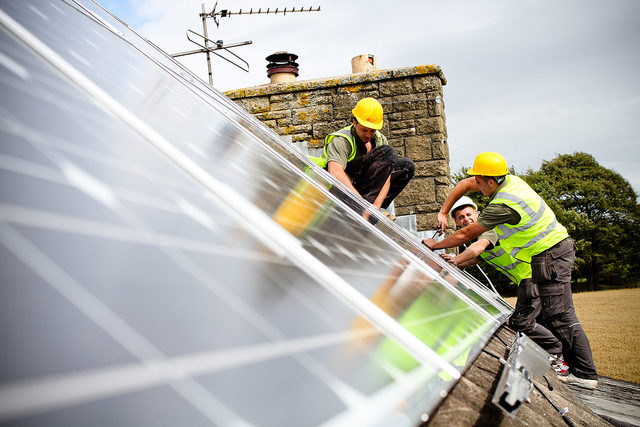
Installing residential solar panels is a big undertaking. And one that you shouldn’t take on without due diligence. This is a big investment with a huge return on investment. If you take the time up front to make sure you’re getting the most optimal system installed for your needs, you’ll reap the benefits more quickly and in a greater capacity on the back end.

